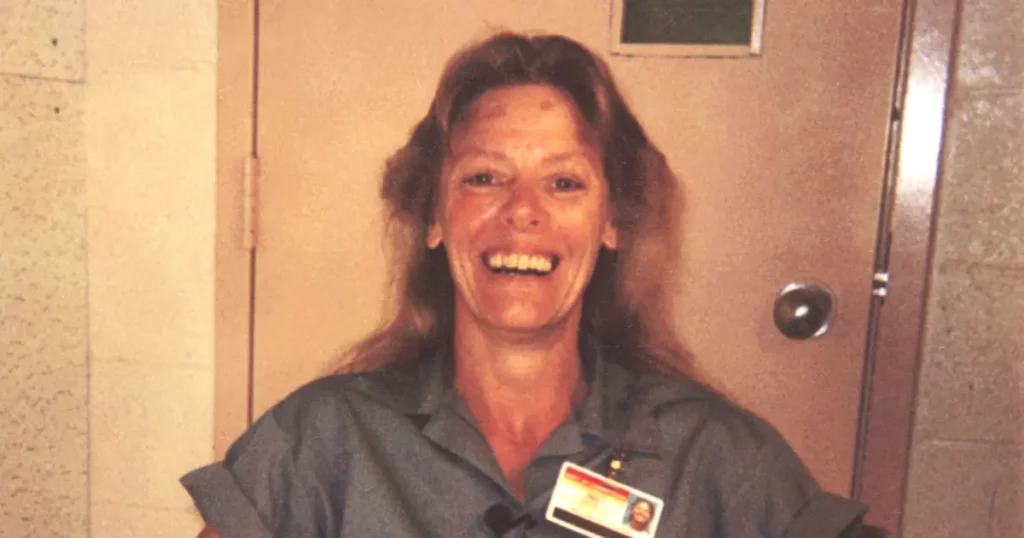Aileen Wuornos: Beyond the Monster Myth
Netflix’s new documentary “Aileen: Queen of the Serial Killers” delves into the complex and deeply troubling life of Aileen Wuornos, offering viewers a nuanced examination of a woman whose name became synonymous with female serial killers in America. The documentary explores the traumatic circumstances that shaped Wuornos’s life before she embarked on a killing spree that left seven men dead across central Florida within a 12-month period. Through interviews, archival materials, and Wuornos’s own words, the film challenges viewers to look beyond the simplistic “monster” narrative that often surrounds notorious killers. “The real Aileen Wuornos is not a serial killer,” she says hauntingly in the documentary trailer. “I was so lost that I turned into one.” This statement encapsulates the documentary’s approach – an attempt to understand how a deeply damaged human being could commit such heinous acts, while simultaneously critiquing the American justice system that ultimately executed her in 2002.
Wuornos’s life was marked by abandonment and abuse from the very beginning. Born to parents in a Detroit suburb who separated before her birth, Wuornos endured a childhood that no child should experience. By age 15, she gave birth to a boy whose father was never publicly identified, according to EBSCO records. After placing her son for adoption, she dropped out of school and eventually hitchhiked to Florida in her early twenties, seeking escape and a fresh start. In Florida, financial desperation led her to sex work and petty crimes as survival mechanisms – choices that would eventually place her on the highways where her murders would later occur. Documentary director Emily Turner poignantly observes, “It’s so much easier to write off someone who’s done such heinous acts as a coldblooded murderer [rather than] a deeply damaged human. Actually, she was made, and that’s chilling.” This perspective invites viewers to consider the complex interplay between personal trauma and societal failures that can contribute to the making of someone capable of serial violence.
The killings began in 1989 when Wuornos shot and killed Richard Mallory after a sexual encounter. She later testified that Mallory had grown violent, claiming he raped, beat, and sodomized her during their encounter. This violent interaction seemingly triggered something in Wuornos, as she went on to murder at least six more men over the next year, including victims from various walks of life – a construction worker, a trucker, and even a retired police chief. The pattern of violence raised difficult questions about her motives and mental state. Was she acting in self-defense, as she sometimes claimed? Was she experiencing post-traumatic responses from earlier abuse? Or had she crossed a threshold into calculated killing? The documentary examines these questions without offering simple answers, reflecting the complexity of Wuornos’s case and the problematic nature of labeling anyone simply as a “monster” without considering the circumstances that shaped them.
Wuornos’s legal journey was relatively swift by capital punishment standards. In January 1992, she was convicted of first-degree murder for killing Mallory and sentenced to death just four days later. By February 1993, she had received a total of six death sentences after pleading no contest to three additional murders and guilty to two others. She then spent nearly a decade on Florida’s death row, during which time she gave conflicting accounts of the events surrounding her crimes, alternately claiming self-defense and later admitting to more calculating motives. This inconsistency complicated public understanding of her case and contributed to the difficulty in forming a coherent narrative around her actions. The Netflix documentary attempts to wade through these contradictions, presenting Wuornos not as a simple villain or victim, but as a deeply troubled individual whose actions emerged from a complex web of personal trauma, societal neglect, and psychological damage. Her execution by lethal injection in 2002 ended her life but did little to resolve the questions surrounding her case.
Wuornos’s story entered popular culture most prominently through the 2003 film “Monster,” in which Charlize Theron’s transformative performance earned her an Academy Award for Best Actress. Theron initially doubted her ability to portray such a complex character but was encouraged by director Patty Jenkins who saw something in the actress that aligned with the role. “I never had somebody believe in me like that before,” Theron told Marie Claire in 2019, highlighting the emotional impact of taking on such a challenging role. Both “Monster” and Netflix’s documentary explore Wuornos’s claims of self-defense, particularly regarding Mallory’s murder. However, Florida courts remained skeptical of these claims, citing her inconsistent statements as evidence against her. The contrast between cinematic portrayal and documentary approach raises important questions about how society narrativizes criminals, particularly female ones, and the extent to which we’re willing to consider the underlying factors that contribute to violence.
The new Netflix documentary arrives at a time when public interest in true crime has never been higher, but it also coincides with growing criticism of how such stories are told. Rather than sensationalizing Wuornos’s crimes, “Aileen: Queen of the Serial Killers” appears to be attempting something more nuanced – an examination of how childhood trauma, systemic neglect, poverty, and gender-based violence can create a perfect storm in which horrific acts become possible. The documentary invites viewers to hold two seemingly contradictory ideas simultaneously: that Wuornos was responsible for terrible acts of violence, and that she herself was a product of terrible violence. By exploring the complexity of her story – from her troubled childhood to her final days on death row – the documentary challenges viewers to consider the broader implications of how society handles those who fall through its cracks. Through Wuornos’s story, difficult questions emerge about justice, rehabilitation, mental health care, and the death penalty in America. While not excusing her crimes, the documentary seems to suggest that understanding the making of a “monster” might be the first step toward preventing such tragedies in the future.


